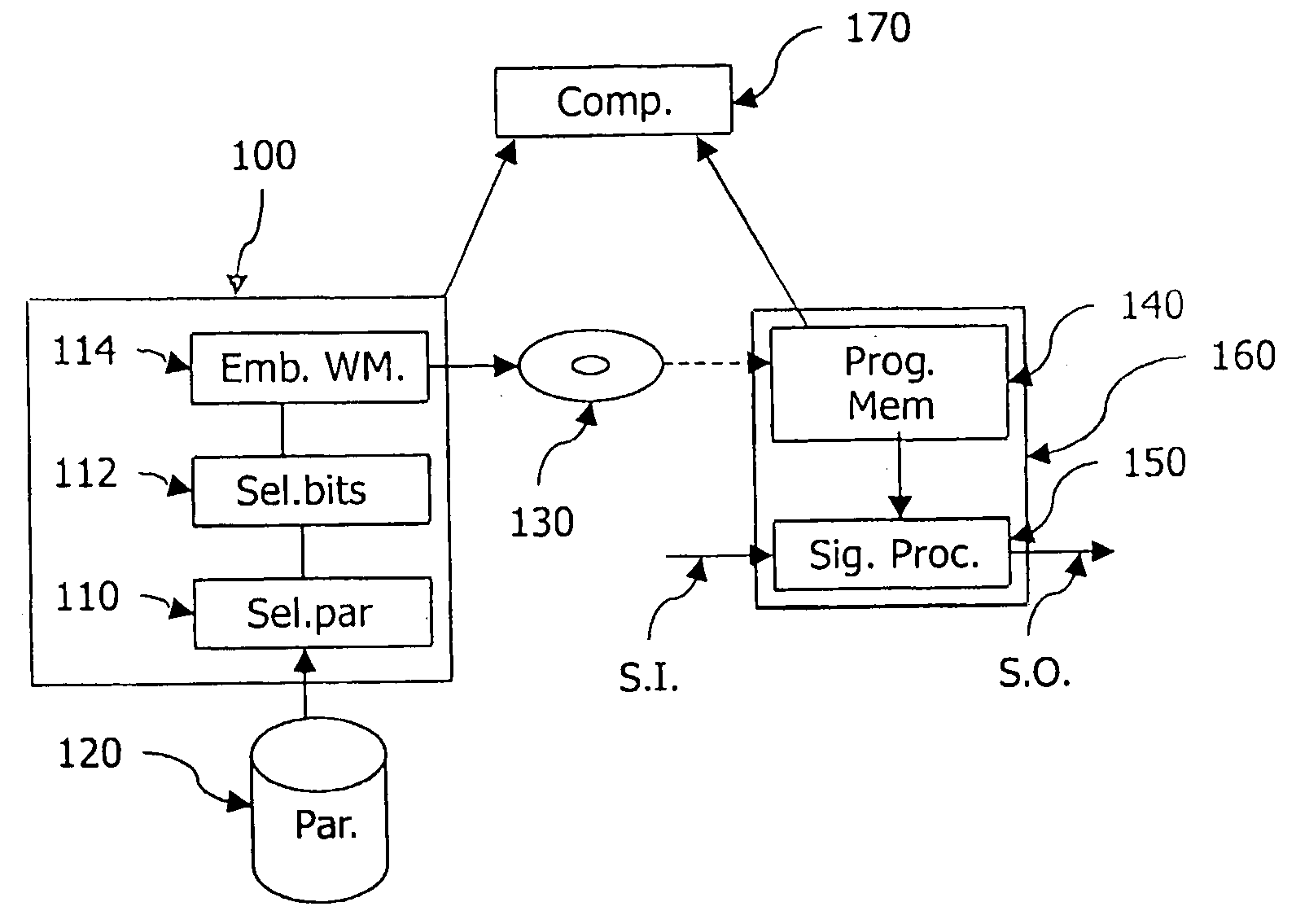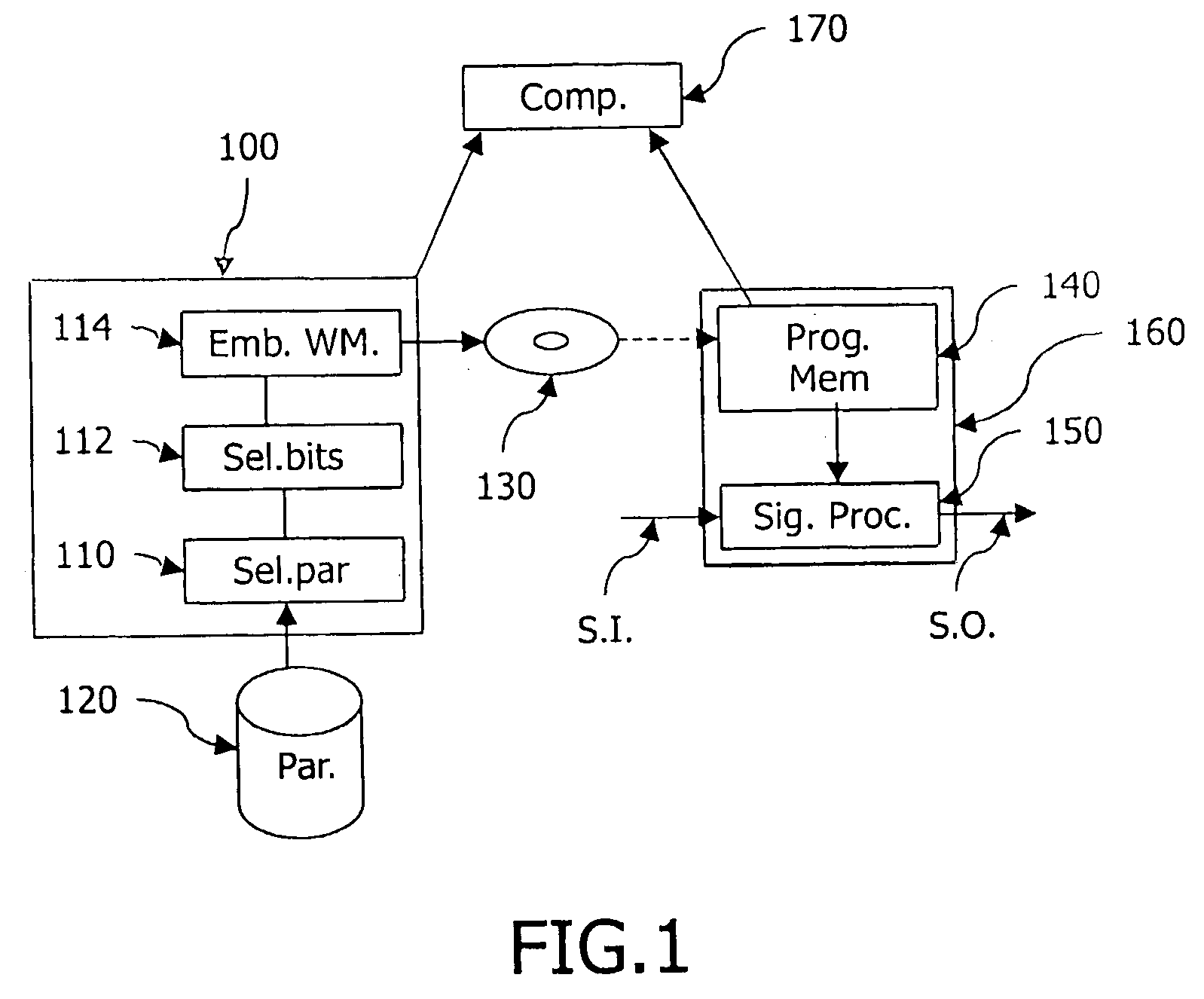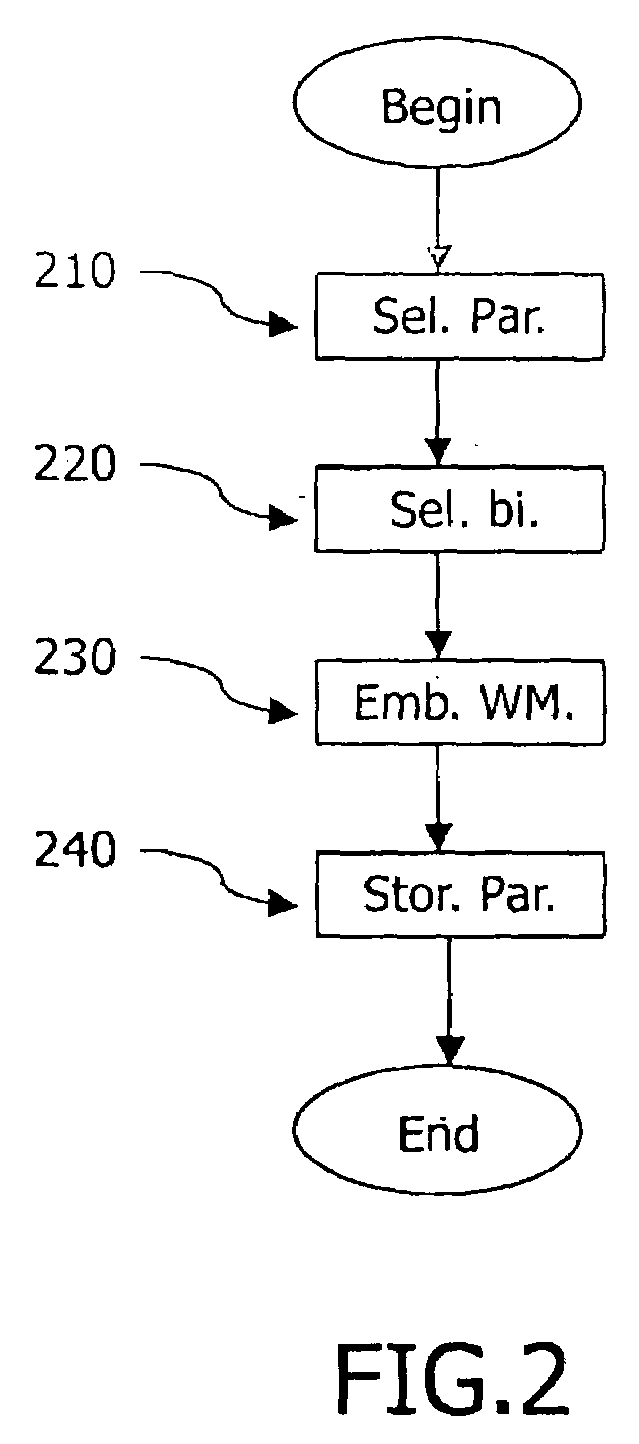Protecting a DSP algorithm
- Summary
- Abstract
- Description
- Claims
- Application Information
AI Technical Summary
Benefits of technology
Problems solved by technology
Method used
Image
Examples
first embodiment
[0036]In FIGS. 1A and 2A, the parameters are already present in a form as they were intended to be used during the design of the signal processing function. Possibly not all of those parameters are suitable for being watermarked. To this end, means 110 selects those parameters that can be disturbed without substantially affecting a quality of the signal processing function. In practice, a human designer of the system may have compiled a list of parameters that may be modified. Suitable candidate parameters are those with at least one least significant bit being irrelevant for the performance of the function. The device 100 also includes means 112 for selecting a number of least significant bits of the selected parameters that can be disturbed without substantially affecting a quality of the signal processing function. Similar to as indicated above, the human designer may have indicated for each parameter the minimum number of most significant bits that may not be affected by the wat...
second embodiment
[0040]In FIGS. 1B and 2B, the means 110 are used to select parameters that are used for designing the signal processing function and are suitable for being watermarked. As before, a human designer may have compiled a list of candidates from which the selection is made. Since the parameters are selected before the design of tile function, selection of the number of bits that may be used is in general less critical. The means for selecting the bits are still shown using number 112. As for the previous embodiment, the means 114 are used for embedding the watermark in the selected parameters. The parameters may be the same as described before the previous embodiment. However, also parameters may be used that are only used during the design and on which parameters used by the function are based. For example, if a low-pass digital filter with a cut-off frequency of 12 KHz. has to be designed (i.e. the input design parameter is 12 KHz.) this design parameter may be water-marked (for exampl...
PUM
 Login to View More
Login to View More Abstract
Description
Claims
Application Information
 Login to View More
Login to View More - R&D
- Intellectual Property
- Life Sciences
- Materials
- Tech Scout
- Unparalleled Data Quality
- Higher Quality Content
- 60% Fewer Hallucinations
Browse by: Latest US Patents, China's latest patents, Technical Efficacy Thesaurus, Application Domain, Technology Topic, Popular Technical Reports.
© 2025 PatSnap. All rights reserved.Legal|Privacy policy|Modern Slavery Act Transparency Statement|Sitemap|About US| Contact US: help@patsnap.com



